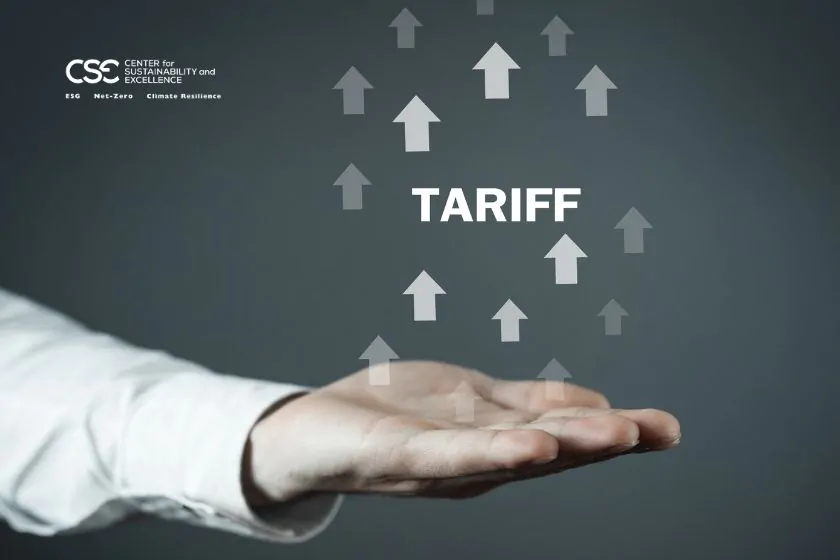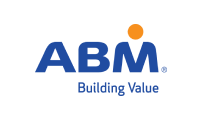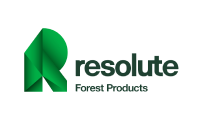Navigating Policy Shifts in a Rapidly Decarbonizing Economy
As the U.S. government increasingly turns to tariffs as a policy lever, corporate sustainability faces a new inflection point. How can companies stay aligned with long-term ESG goals amid rising protectionism and trade turbulence?
This article by CSE research department unpacks how recent U.S. tariff actions—especially on clean tech, critical minerals, and global supply chains—are reshaping the corporate sustainability landscape. We also explore strategies that forward-thinking companies can adopt to stay resilient and lead in this changing environment.
-
Clean Tech Under Pressure: Tariffs as a Climate Disruptor
High Tariffs Threaten Solar, EVs, and Green Tech Growth
New tariffs—up to 100% on electric vehicles and 25% on solar panels and critical minerals—pose serious risks to the clean energy transition. These measures largely target Chinese imports but also impact trade partners like Mexico and Canada.
- Solar Industry Impact: Over 80% of U.S. solar panels come from Chinese manufacturers. Added tariffs may delay solar adoption, hinder decarbonization efforts, and flood the EU market with low-cost alternatives.
- Electric Vehicles (EVs): Tariffs on aluminum, steel, and EV parts increase costs for U.S. automakers, while Chinese firms may outmaneuver barriers and seize global market share.
- Critical Minerals Shortage: China’s restrictions on rare earth exports could cripple U.S. clean-tech production—impacting everything from wind turbines to batteries.
-
Balancing Localization and Globalization
Redefining Supply Chains for Sustainability and Risk Reduction
Companies face a tough choice: relocalize production to avoid tariffs, or maintain global sourcing that supports clean supply chains. Each option comes with trade-offs.
- Local Production: Reduces geopolitical risks and shipping emissions but may rely on less efficient, carbon-heavy infrastructure.
- Global Sourcing: Offers cost and efficiency advantages but is now vulnerable to policy shocks and tariff-induced volatility.
The challenge? Building ESG-compliant supply chains that are both cost-effective and resilient in a polarized trade environment.
-
Embracing the Circular Economy
A Smart Strategy to Hedge Against Supply Chain Shocks
The circular economy offers a viable path to sustainability and independence from volatile global markets:
- Recycled Resources: Recovering critical minerals from retired electronics and batteries reduces reliance on imports.
- Waste-to-Value Innovation: Turning waste into inputs boosts profitability and sustainability simultaneously.
Investing in circular models helps businesses future-proof their operations while reinforcing ESG strategies.
-
Economic Fallout: The Financial Toll of Tariffs
Margin Pressure and Delayed Green Investments
Tariffs aren’t just policy tools—they’re financial shockwaves. According to PwC, proposed tariffs could increase the U.S. annual tariff burden from $76 billion to nearly $700 billion.
The consequences?
- Squeezed margins for import-heavy industries
- Higher consumer prices
- Deferred ESG investments and innovation budgets
For sectors like automotive, pharmaceuticals, and tech, this could stall progress on climate goals and sustainable transformation.
-
Building Resilience Through Policy and Partnerships
Advocacy and Alliances Are More Critical Than Ever
To offset risks, corporate sustainability leaders must take a dual approach:
- Policy Engagement: Advocate for clean-tech exemptions, decarbonization-focused trade deals, and harmonized ESG standards.
- Operational Resilience: Diversify sourcing with allied nations, invest in decentralized infrastructure like microgrids, and prepare for supply chain shocks.
Sustainability in this era requires both external influence and internal adaptability.
-
Technology: The ESG Game-Changer
Digital Tools for Smarter Sustainability Decisions
As uncertainty grows, technology emerges as a powerful enabler. AI, blockchain, and real-time analytics platforms empower businesses to:
- Monitor ESG risks dynamically
- Forecast the impact of tariff changes
- Improve stakeholder transparency
Digital transformation is no longer optional—it’s essential to protect and scale sustainability initiatives.
Can Tariffs Be a Catalyst for ESG Innovation?
While tariffs bring disruption, they also offer opportunity. Businesses that embrace this challenge are discovering ways to:
- Shorten and green their supply chains
- Accelerate digital and circular innovation
- Strengthen ESG alignment and market positioning
Success in this new era demands agility, innovation, and vision. With the right strategy, tariffs can become a launchpad—not a roadblock—for corporate sustainability leadership.
Call to Action: Future-Proof Your ESG Strategy
Are you ready to lead your organization through this shifting landscape?
Join Our Certified Sustainability Program
June 5–6 & 9, 2025 | Live Online
Secure your spot today and receive early bird and group discounts. Contact: [email protected]
🎟️ Bonus: Participants earn a 20% discount for the World Sustainability Leadership Forum 2025
🗓️ June 12–13, 2025
Be part of the global conversation driving ESG transformation!
The World Sustainability Leadership Forum is where change begins, and where tomorrow’s sustainability leaders rise.







